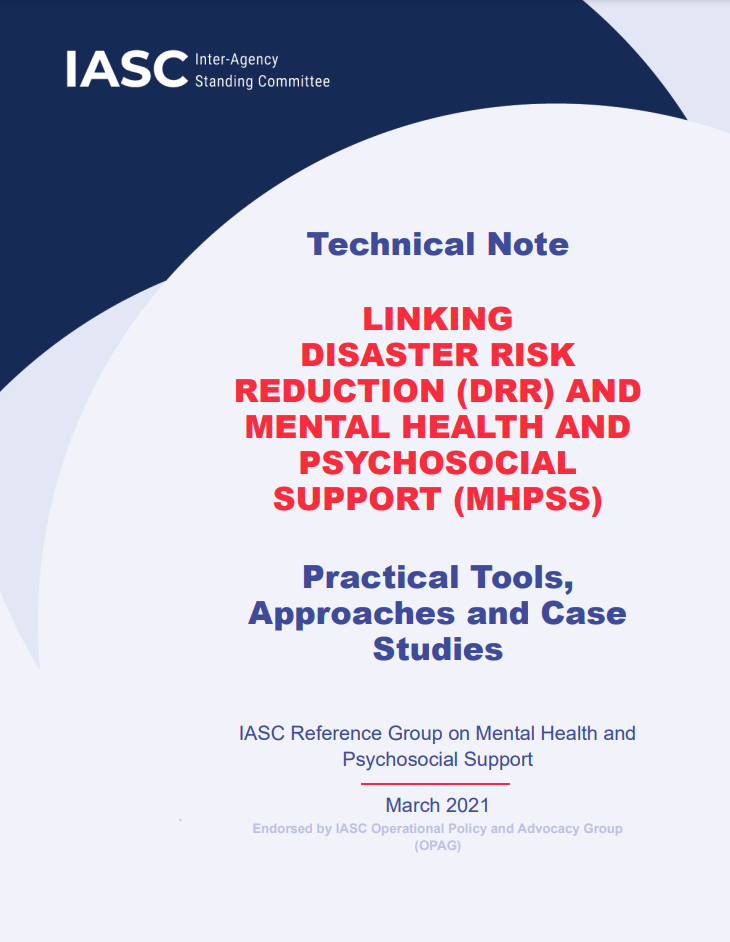Linking Disaster Risk Reduction (DRR) and Mental Health and Psychosocial Support (MHPSS): Practical Tools, Approaches and Case Studies (IASC)

This Technical Note on Disaster Risk Reduction (DRR) and Mental Health and Psychosocial Support (MHPSS): Practical Tools, Approaches and Case Studies were developed to assist humanitarian aid, development and disaster risk management organizations, national and local governments, and community actors within and across sectors with the delivery of a priority set of actions to reduce suffering and improve mental health and psychosocial well-being through integration with risk management perspectives and approaches that link prevention, preparedness, response, and recovery. Additionally, it was designed to assist governmental actors, domestic sources of financing, and donors in understanding and supporting activities focused on MHPSS as part of DRR and sectoral programs. It was developed in concordance with and was inspired by WHO’s Health EDRM Framework and the United Nations Office for Disaster Risk Reduction (UNDRR)’s Words into Action (WiA) guidelines for the many aspects of implementing the Sendai Framework for Disaster Risk Reduction 2015–2030. Further guidance on implementing DRR as part of humanitarian action can be found in the UNDRR Recommendations for the Humanitarian Programme Cycle (UNDRR, 2020).
It must be stated that this technical note is not intended to serve as a universal approach and should instead be used as a guide that requires local and contextual adaptation. Furthermore, the elements it contains need to be implemented through collaboration between a number of stakeholders and with local individuals and communities. No single agency or actor can be expected to implement all of the actions discussed in this technical note. Potential stakeholder roles and responsibilities are listed in Table 1.
The content of this publication was developed by the IASC Reference Group for Mental Health and Psychosocial Support in Emergency Settings. The development of the publication was managed by the World Health Organization (WHO) and overseen by a thematic working group of member agencies of the Reference group, including CBM International (CBM), International Medical Corps (IMC), IsraAid, M.decins du Monde (MdM), MHPSS.net, the MHPSS Collaborative, Save the Children and the United Nations Children’s Fund (UNICEF). Through consultation and peer review processes, valuable inputs to this publication and the common framework were also received from IASC Reference Group agencies and from other agencies, including the Caribbean Development Bank (CBD), the National Institute of Mental Health and Neurosciences, India (NIMHANS) and the United Nations Office for Disaster Risk Reduction (UNDRR), as well as many individual practitioners, experts, and academic partners.
Read and download the Technical note in other languages (French, Spanish, Arabic) here.
